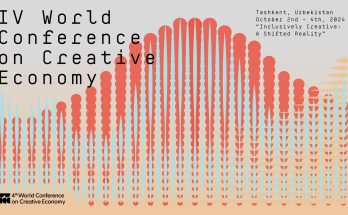 In the international tourist destination of Goa, a constant refrain one hears is of overflowing garbage. Goans are upset by the waves of waste that tourists ‘bring with them’. During the six months of tourist season, roadsides and sea-shores are littered with mineral bottles, plastics in all forms and other refuse with impunity. The countless home-stays, restaurants, eateries and beach shacks along the coast from Candolim-Calangute, northwards up to Anjuna and beyond, all add to the slop. The Gram Panchayats may make politically correct noises, or even take ad hoc action, from time to time, but it is too little to amount to anything substantial or sustainable. They simply can’t seem to get their act together despite the monies disbursed to them for that purpose. But all they need to do, really, is to open their eyes and pull out a leaf from the pages of capital city – Panaji’s, action plan regarding garbage disposal.
In the international tourist destination of Goa, a constant refrain one hears is of overflowing garbage. Goans are upset by the waves of waste that tourists ‘bring with them’. During the six months of tourist season, roadsides and sea-shores are littered with mineral bottles, plastics in all forms and other refuse with impunity. The countless home-stays, restaurants, eateries and beach shacks along the coast from Candolim-Calangute, northwards up to Anjuna and beyond, all add to the slop. The Gram Panchayats may make politically correct noises, or even take ad hoc action, from time to time, but it is too little to amount to anything substantial or sustainable. They simply can’t seem to get their act together despite the monies disbursed to them for that purpose. But all they need to do, really, is to open their eyes and pull out a leaf from the pages of capital city – Panaji’s, action plan regarding garbage disposal.
Big Brother Corporation of City of Panaji (CCP), next door, has worked dedicatedly towards ensuring segregation and reduction of household wastes at source in the model of best practices, for a decade now. Today, it presents a perfect example and case study on how waste can be contained and managed in-house. It was a happy coincidence, of course, that the tide of one individual’s drive was taken at the flood of the corporation’s political will. At the heart of the success is one woman, Patricia Pinto and her zero waste campaign.
 When Patricia Pinto started her crusade in 2000, she was just another conscientious citizen trying to create awareness in her neighbourhood. The dedication and methodical approach of her People’s Movement for Civic Action soon impressed the Corporation authorities who co-opted her as a councillor in charge of city’s waste management programme. When she started out, mixed waste was being collected from roadside bins and transported to a landfill on the outskirts of the capital city. The landfill at Kurka was saturated and composite garbage was just being dumped onto the site generating a standing mountain of waste. It was inevitable that the residents adjacent the landfill site should protest and seal the area leaving no option for CCP but to look for alternative site or solution. Patricia realized that dealing with the waste or disposing it within the city precincts was the only way out; that waste segregation at source, composting biodegradable waste and recycling the non-biodegradables was the only answer.
When Patricia Pinto started her crusade in 2000, she was just another conscientious citizen trying to create awareness in her neighbourhood. The dedication and methodical approach of her People’s Movement for Civic Action soon impressed the Corporation authorities who co-opted her as a councillor in charge of city’s waste management programme. When she started out, mixed waste was being collected from roadside bins and transported to a landfill on the outskirts of the capital city. The landfill at Kurka was saturated and composite garbage was just being dumped onto the site generating a standing mountain of waste. It was inevitable that the residents adjacent the landfill site should protest and seal the area leaving no option for CCP but to look for alternative site or solution. Patricia realized that dealing with the waste or disposing it within the city precincts was the only way out; that waste segregation at source, composting biodegradable waste and recycling the non-biodegradables was the only answer.
The Chaka Chak campaign of 2003 began with creating awareness about composition of waste and the importance of segregating it into dry and wet components, doing away with curb-side bins and enabling door-to-door collection. One of the highlights of her campaign has been involving schools and colleges and training students and teachers in the 3Rs – reduce, reuse and recycle; to apply in practice what they learnt in text-books.
 Today, Panaji has 99 composting sites for wet garbage and Patricia runs one of the two dry waste recycling units where the entire city’s segregated dry waste – as per four-bin formula – lands. Before the four-way segregation system, a total of 26-truckloads of waste were being transported to the site twice a week; the volume has come down to just 14 truckloads since the system caught on with the households five years back.
Today, Panaji has 99 composting sites for wet garbage and Patricia runs one of the two dry waste recycling units where the entire city’s segregated dry waste – as per four-bin formula – lands. Before the four-way segregation system, a total of 26-truckloads of waste were being transported to the site twice a week; the volume has come down to just 14 truckloads since the system caught on with the households five years back.
When the dry waste – plastic, paper, glass and metal – comes segregated to the St. Inez composite site that Patricia manages, the labourers’ task is already minimized. At different sheds 30-odd labourers simply have to fine-tune the process and double-check the compartmentalised waste. Thus cloth pieces and thermocole sits sorted out and compressed by the baling machines into one kilo bales. These bales are bought as alternative fuel by ACC cement factory across the border in Karnataka, for instance. Tetrapacks, a category in itself, is bought by recycling units of Timblo in Margao and Gujarat’s Daman Ganga. The latter recycles tetrapacks into roofing sheets and even books. Where earlier, tetrapack was a liability, it now fetches anywhere between Rs. 25 and 30 per kilo, says Patricia.
Even hotels are co-opted into this scheme of waste collection; they are assigned number identities and improper disposal of dry wastes is penalized. This has worked and hotels in Panaji and Miramar have been following the system. Of course, waste composition is a complex subject. Every day, Patricia has to deal with new issues and find solutions such as when hotels dispose of curries in plastic pouches. “We Goans love our curries, but when they are disposed like this in a combination of wet and dry garbage sorting out becomes tedious. Recycling plastics require them to be inert and dry.” Emphasising the right manner of disposal and educating the public is the only way out at such times, she maintains. Patricia’s dedication is exemplary and rare. She says: “once you get into garbage, it is difficult to get out. It is fascinating”!

(Padmaja Parulkar is a green blogger and avid bird-watcher. She veered away from full-time journalism to travel. A die-hard lover of Africa, she is currently based in Goa).
Author Profile
Latest entries
 India and the WorldOctober 9, 2013Revisiting Westgate mall in Kenya: A symbol of multiculturalism
India and the WorldOctober 9, 2013Revisiting Westgate mall in Kenya: A symbol of multiculturalism CultureMarch 29, 2013Letter from Goa: Where there is Waste, there’s a Way
CultureMarch 29, 2013Letter from Goa: Where there is Waste, there’s a Way TravelMarch 11, 2013The Romance of Sailing: When living legends meet in Goa…
TravelMarch 11, 2013The Romance of Sailing: When living legends meet in Goa… TravelMarch 2, 2013Tsavo National Park: Not just Another Safari, check out red elephants!
TravelMarch 2, 2013Tsavo National Park: Not just Another Safari, check out red elephants!







